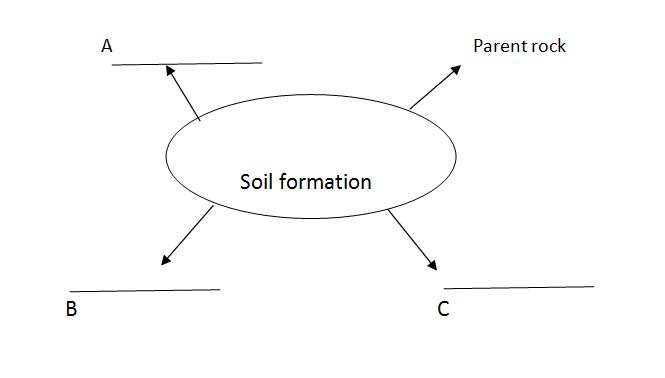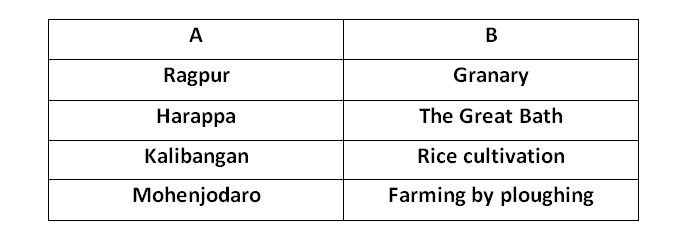Answer any five questions from Qn. 1 to 6. Each carries 2 score (5×2=10)
1. How did the tools of Mesolithic age differ form that of the Paleolithic age? 2. How does the pressure vary with depth to wards the interior of the earth? Give reason. 3. How did the Paleolithic humans make use of hunting other than for food? 4. Identify the pictures and write down the river valley civilisations associated with them.
5. Give example for the rocks given below. Igneous rocks – Basalt Sedimentary rocks – ____________(a)__________________ Metamorphic rocks – ____________(b)__________________
6. Mention any two features of cuneiform, the art of writing of Mesopotamia. 7. What were the circumstances that led to the shifting of humans from food gathering to food production during the Neolithic age?
8. (a) Mention the type of weathering caused by plants and animals . (b) How do the activities of plants and animals cause weathering?
9.What information about the Chalcolithic age do we get from the evidences discovered from Catalhoyuk?10. Complete the chart based on the factors influencing the soil formation.

11. write the peculiarities of earth’s mantle.
Answer any two questions from Qn. 12 to 14 Each carries 4 score (2×4=8)
12. The Egyptians and the Mesopotamians achieved remarkable progress in the field of science. Substantiate the statement. 13. Link column’A’with appropriate items from column ‘B’

14. The techonological progress attained during the Neolithic age are the evidences of human progress. Explain with examples.
Answer any two questions from Qn.15 to 17. Each carries 5 score (2×5=10)
15. Explain the changes occurred during the Neolithic age different from the Paleolithic age based on the given Hints.
- Tools
- Food gathering
- Animal husbandry
- Occupation
- Settled Life
16. Prepare a short not on the features of the cities and the life of people in the Harappan Civilization. 17. List out the concepts to be included for the seminar in connection with world soil day in your school on the topic ‘Land will be sterile if the soil is lost’.
